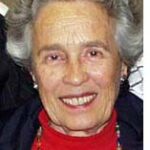By Eileen Wingard

LA JOLLA, California –Works by two Jewish composers were programmed for the La Jolla Symphony and Chorus’ concerts on December 5 and 6. Ori Talmon’s Nefakh (Volume), underwritten by the Thomas Nee Commissioning Fund, received its world premiere, and Aaron Copland’s Symphony No. 3 concluded the program.
The opening work was The Light That Fills the World by John Luther Adams. The composer lives in Alaska, and his piece, composed in 1999, sounds like a series of evenly spaced organ chords, played at full throttle, evoking a white light whose brightness is so strong that it begins to blind. The composer’s purpose is, through the unrelenting texture, to embody stasis and evoke the ecstatic. To this listener, it brought not ecstasy, but relief when the intense sounds finally came to an end.
The second work, Nefakh, by the Israeli-born composer, Ori Talmon, opened with an interesting wood block solo which reappeared in the middle of the work and at the conclusion, giving the piece a sense of unity. The composer drew his inspiration from an abstract painting by the French artist, Simon Hantal. As with many contemporary works, the piece was devoid of any discernible melody and achieved its musical goals through interesting rhythmical sequences and unusual instrumentation.
The next work, Samuel Barber’s Prayers of Kierkegaard, completed in 1953, was balm to this melody-hungry listener. It opened with male voices, singing a cappella in a Gregorian-like chant. With soprano solo and two other soloists, mezzo-soprano and tenor, the music came forth, full of expressive melodies and pleasing harmonies, beautifully enhancing the spiritual message of the Danish philosopher, Seren Kierkegaard (1813-1855). Barber was an American romantic whose works include a marvelous violin concerto, the often-heard Adagio for Strings and the opera, Vanessa. Prayers of Kierkegaard was dedicated to the memory of Natalie and Serge Koussevitzky, the conductor of the Boston Symphony and his wife.
The second half of the program was devoted to Aaron Copland’s Symphony #3. Its opening, with large interval skips in the melody, was reminiscent of passages in Rodeo and Appalachian Spring. This music paints pictures of prairies and square dances, even though the composer was a born and bred New Yorker. The most spectacular movement is the last, using the composer’s Fanfare for the Common Man as the opening springboard, expanding and contracting the thematic material, treating it fugally, and creating from a musical kernel a resounding triumph of the human spirit. The movement is marked molto deliberato, and the opening brass and timpani fanfare rang forth with deliberate self-confidence. The youthful timpanist punctuated his notes as if they were giant exclamation marks. The symphony was a wonderful conclusion to an enjoyable concert.
Our community should indeed feel indebted to conductors, Steven Schick and David Chase, for exposing us to Twentieth and Twenty-first Century composers such as those showcased at these December concerts.
*
Wingard is a freelance writer and former violinist with the San Diego Symphony. She may be contacted via eileen.wingard@sdjewishworld.com. Any comments below should include the writer’s full name and city and state or residence, or city and country fro those living outside the U.S.